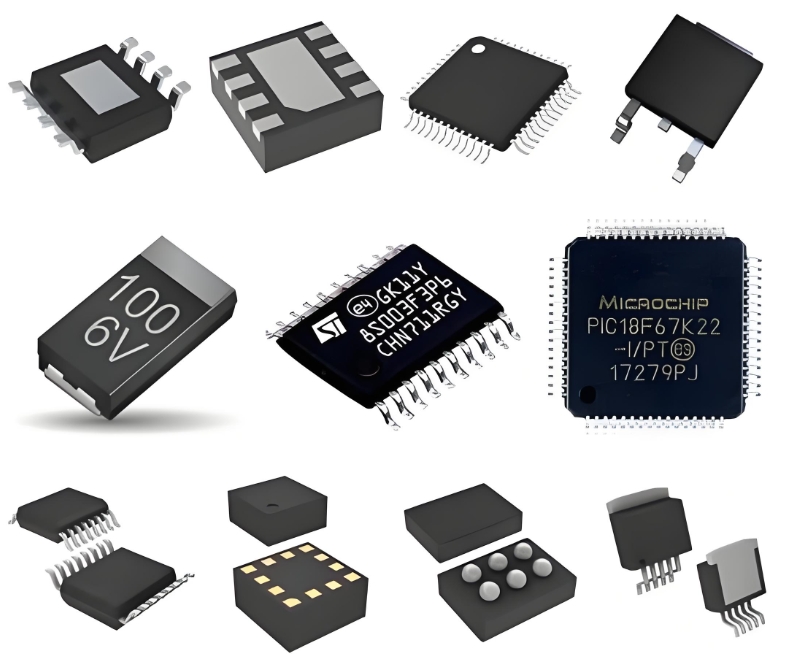**High-Precision Voltage Reference Design with the ADR420BRZ-REEL7 for Stable Instrumentation Systems**
The pursuit of stability and accuracy in instrumentation systems is a fundamental challenge in electronic design. Parameters such as sensor readings, data conversion accuracy, and signal integrity are critically dependent on the quality of the DC reference voltage. A poorly designed reference can introduce errors that propagate through the entire signal chain, degrading overall system performance. The **ADR420BRZ-REEL7**, a high-precision, low-noise voltage reference from Analog Devices, provides an exceptional solution for applications demanding unwavering precision.
The ADR420BRZ-REEL7 is a **2.048V buried Zener diode** reference, chosen for its excellent initial accuracy, low temperature drift, and minimal long-term hysteresis. Its key specifications make it a cornerstone for high-performance designs. With an **initial accuracy of ±0.06%** and an ultra-low **temperature coefficient of 3 ppm/°C (max)**, it ensures that the reference voltage remains stable across a wide operating temperature range. Furthermore, its exceptionally **low noise performance of 4 µV p-p (0.1 Hz to 10 Hz)** is paramount for resolving small signals in sensitive measurement systems, such as precision analog-to-digital converters (ADCs) and digital-to-analog converters (DACs).
A successful design extends beyond simply selecting the right component; proper implementation is crucial to unlocking the IC's full potential. Key design considerations include:
* **Stable Power Supply:** The ADR420 requires a clean and well-regulated input voltage. **Effective power supply decoupling** is non-negotiable. A **0.1 µF ceramic capacitor** placed as close as possible to the supply pin (Vs), paired with a larger **10 µF tantalum capacitor**, is recommended to filter high and low-frequency noise from the power rail.

* **Low-Noise PCB Layout:** The PCB layout must be optimized for precision analog circuitry. This involves using a solid ground plane, keeping the reference IC and its associated components (especially the input and output capacitors) extremely close together to minimize parasitic inductance and resistance, and isolating the reference circuitry from noisy digital or switching sections of the board.
* **Output Buffering and Load Considerations:** While the ADR420 can source up to 10 mA, directly driving a dynamic or heavy load can cause instability and degrade accuracy. For driving multiple loads or a switched-capacitor ADC input, it is highly advisable to use a **low-noise, high-input-impedance operational amplifier as a buffer**. This isolates the reference from load-induced transients and ensures a stable output voltage.
* **Thermal Management:** Although the device's drift is minimal, **minimizing thermal gradients** across the package enhances stability. Avoiding placement near heat-dissipating components and ensuring adequate airflow can prevent localized heating, further reducing drift-related errors.
Integrating the ADR420BRZ-REEL7 into systems like 20-bit+ precision ADCs, high-resolution data acquisition systems (DAQs), laboratory-grade multimeters, and medical instrumentation ensures that the entire signal chain is built upon a foundation of accuracy. It provides the stable "ground truth" against which all other analog measurements are compared, thereby **enhancing the system's overall resolution and reliability**.
**ICGOOODFIND**: The ADR420BRZ-REEL7 is an exemplary voltage reference IC whose superior specifications for accuracy, temperature drift, and noise are essential for the most demanding instrumentation systems. Achieving its datasheet performance in a real-world application hinges on a meticulous design approach that prioritizes stable power, a clean layout, and proper load management.
**Keywords**: Voltage Reference, Low Noise, High Precision, Temperature Drift, ADR420BRZ-REEL7
